Eunsoo Park
StRDAN: Synthetic-to-Real Domain Adaptation Network for Vehicle Re-Identification
Apr 25, 2020
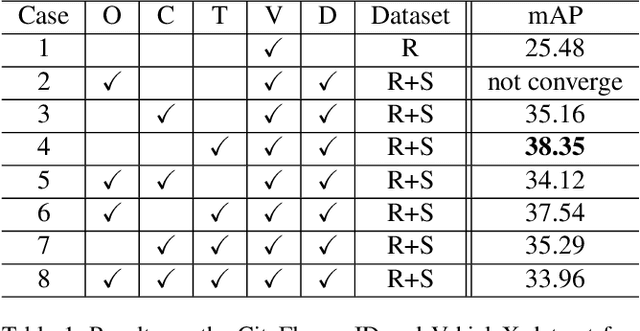
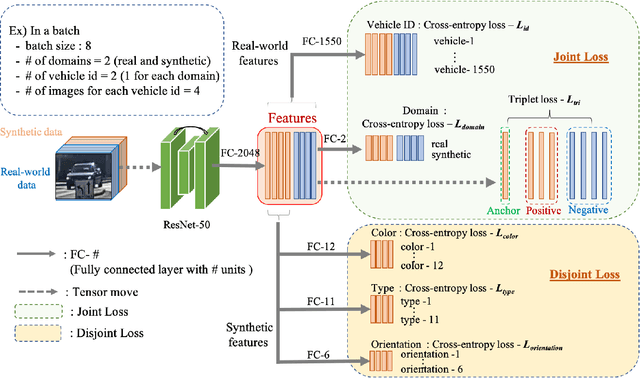
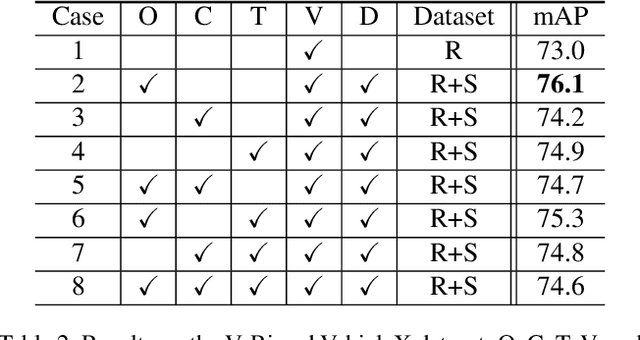
Abstract:Vehicle re-identification aims to obtain the same vehicles from vehicle images. It is challenging but essential for analyzing and predicting traffic flow in the city. Although deep learning methods have achieved enormous progress in this task, requiring a large amount of data is a critical shortcoming. To tackle this problem, we propose a novel framework called Synthetic-to-Real Domain Adaptation Network (StRDAN), which is trained with inexpensive large-scale synthetic data as well as real data to improve performance. The training method for StRDAN is combined with domain adaptation and semi-supervised learning methods and their associated losses. StRDAN shows a significant improvement over the baseline model, which is trained using only real data, in two main datasets: VeRi and CityFlow-ReID. Evaluating with the mean average precision (mAP) metric, our model outperforms the reference model by 12.87% in CityFlow-ReID and 3.1% in VeRi.
End-to-End Fingerprints Liveness Detection using Convolutional Networks with Gram module
Mar 21, 2018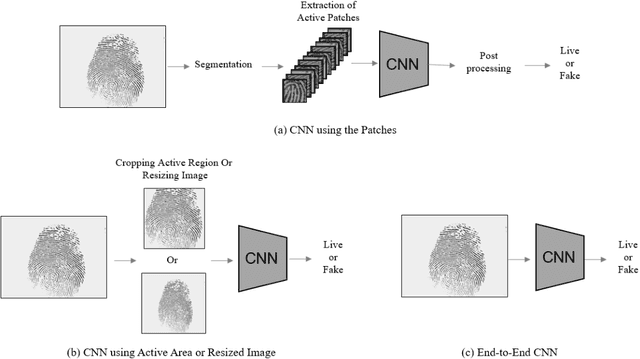
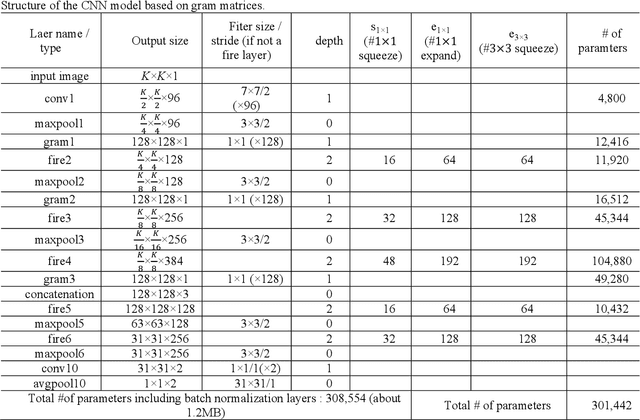

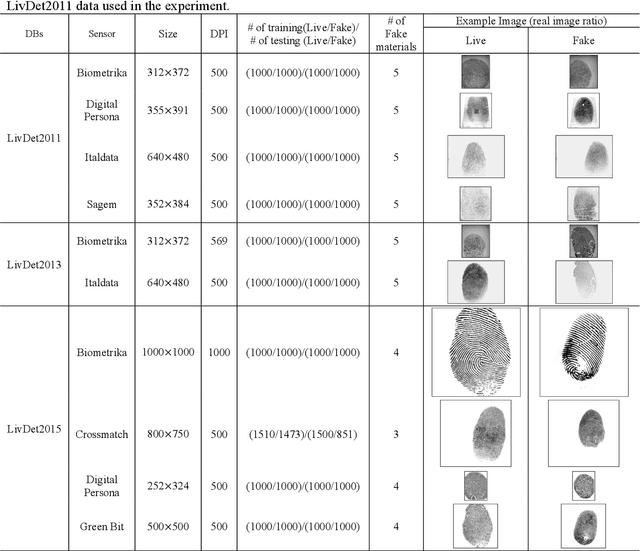
Abstract:This paper proposes an end-to-end CNN(Convolutional Neural Networks) model that uses gram modules with parameters that are approximately 1.2MB in size to detect fake fingerprints. The proposed method assumes that texture is the most appropriate characteristic in fake fingerprint detection, and implements the gram module to extract textures from the CNN. The proposed CNN structure uses the fire module as the base model and uses the gram module for texture extraction. Tensors that passed the fire module will be joined with gram modules to create a gram matrix with the same spatial size. After 3 gram matrices extracted from different layers are combined with the channel axis, it becomes the basis for categorizing fake fingerprints. The experiment results had an average detection error of 2.61% from the LivDet 2011, 2013, 2015 data, proving that an end-to-end CNN structure with few parameters that is able to be used in fake fingerprint detection can be designed.
Patch-based Fake Fingerprint Detection Using a Fully Convolutional Neural Network with a Small Number of Parameters and an Optimal Threshold
Mar 21, 2018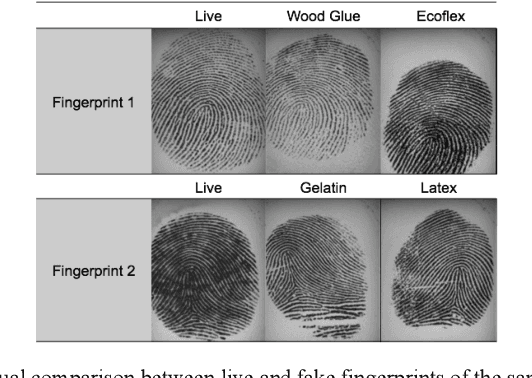
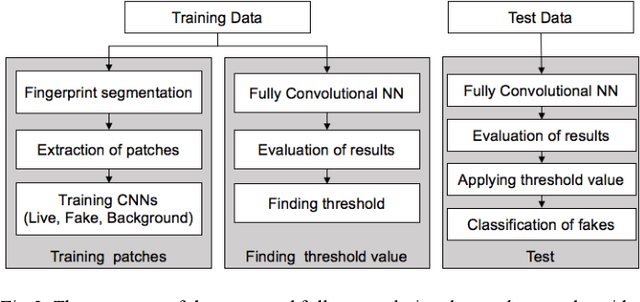
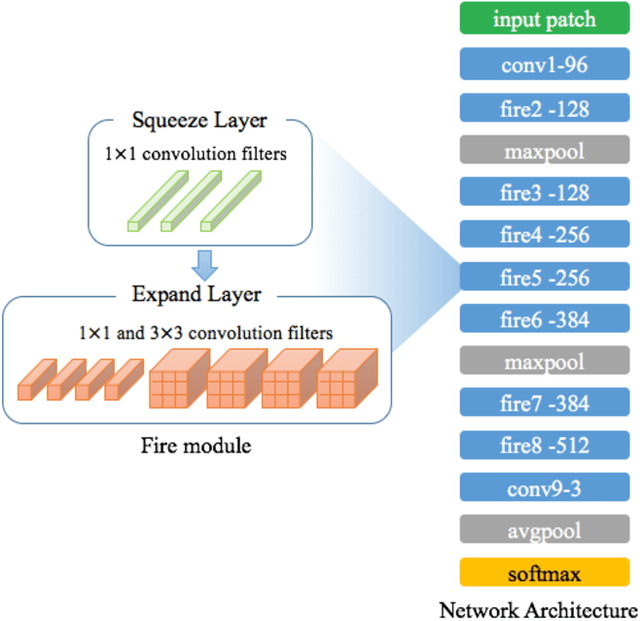
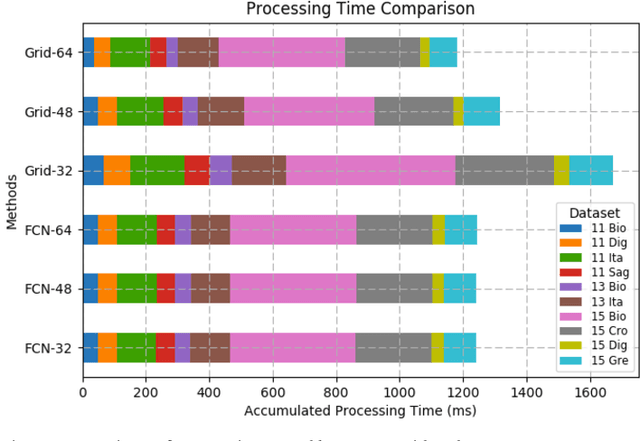
Abstract:Fingerprint authentication is widely used in biometrics due to its simple process, but it is vulnerable to fake fingerprints. This study proposes a patch-based fake fingerprint detection method using a fully convolutional neural network with a small number of parameters and an optimal threshold to solve the above-mentioned problem. Unlike the existing methods that classify a fingerprint as live or fake, the proposed method classifies fingerprints as fake, live, or background, so preprocessing methods such as segmentation are not needed. The proposed convolutional neural network (CNN) structure applies the Fire module of SqueezeNet, and the fewer parameters used require only 2.0 MB of memory. The network that has completed training is applied to the training data in a fully convolutional way, and the optimal threshold to distinguish fake fingerprints is determined, which is used in the final test. As a result of this study experiment, the proposed method showed an average classification error of 1.35%, demonstrating a fake fingerprint detection method using a high-performance CNN with a small number of parameters.
Wide-Residual-Inception Networks for Real-time Object Detection
Jul 17, 2017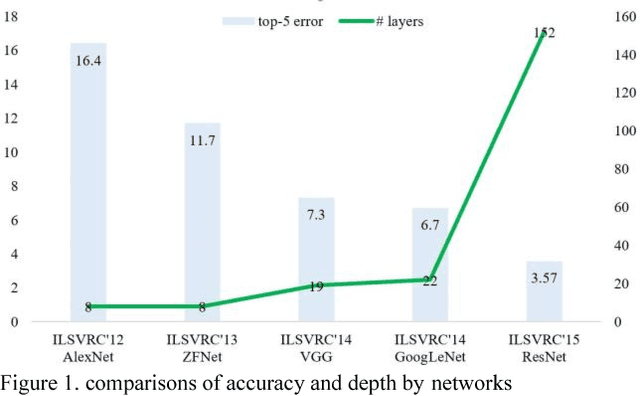
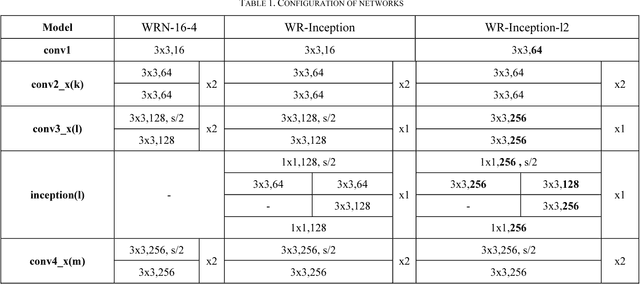
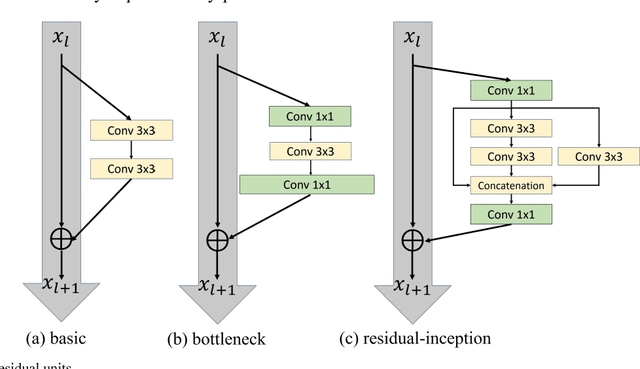
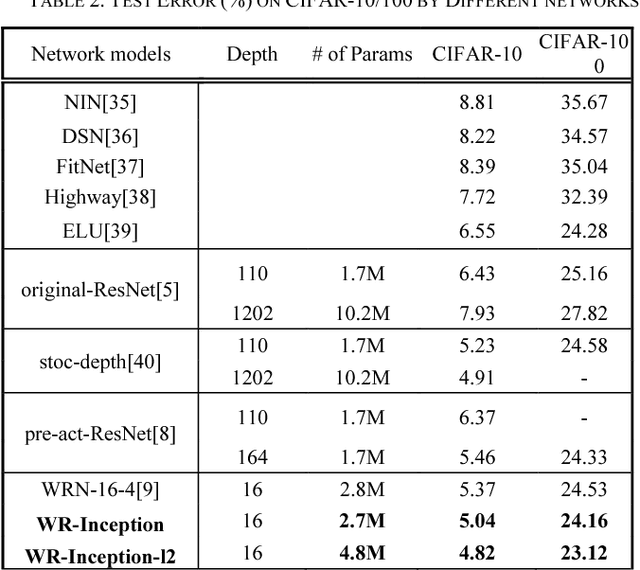
Abstract:Since convolutional neural network(CNN)models emerged,several tasks in computer vision have actively deployed CNN models for feature extraction. However,the conventional CNN models have a high computational cost and require high memory capacity, which is impractical and unaffordable for commercial applications such as real-time on-road object detection on embedded boards or mobile platforms. To tackle this limitation of CNN models, this paper proposes a wide-residual-inception (WR-Inception) network, which constructs the architecture based on a residual inception unit that captures objects of various sizes on the same feature map, as well as shallower and wider layers, compared to state-of-the-art networks like ResNet. To verify the proposed networks, this paper conducted two experiments; one is a classification task on CIFAR-10/100 and the other is an on-road object detection task using a Single-Shot Multi-box Detector(SSD) on the KITTI dataset.
 Add to Chrome
Add to Chrome Add to Firefox
Add to Firefox Add to Edge
Add to Edge